Analysis by Keith Rankin.
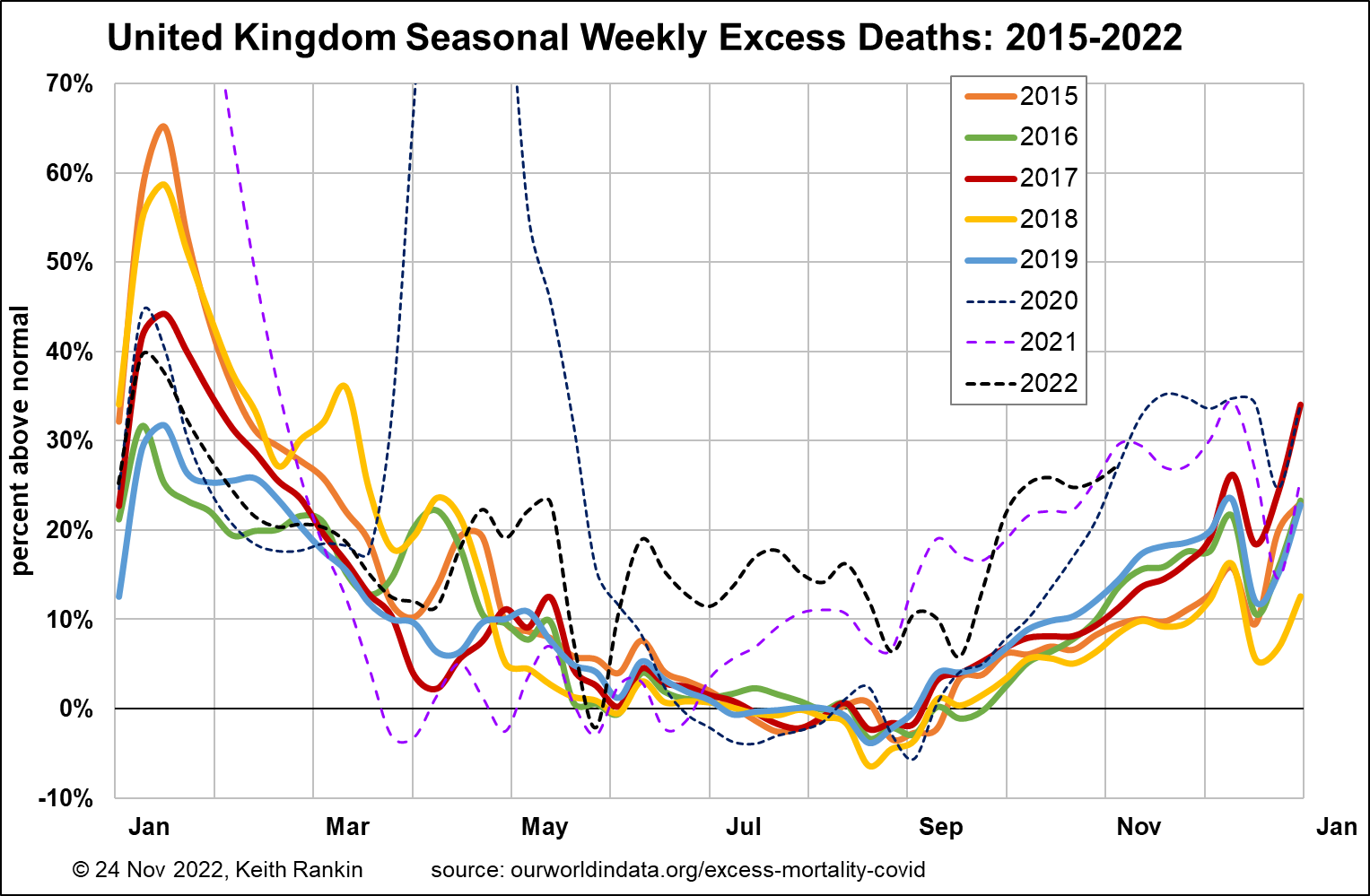
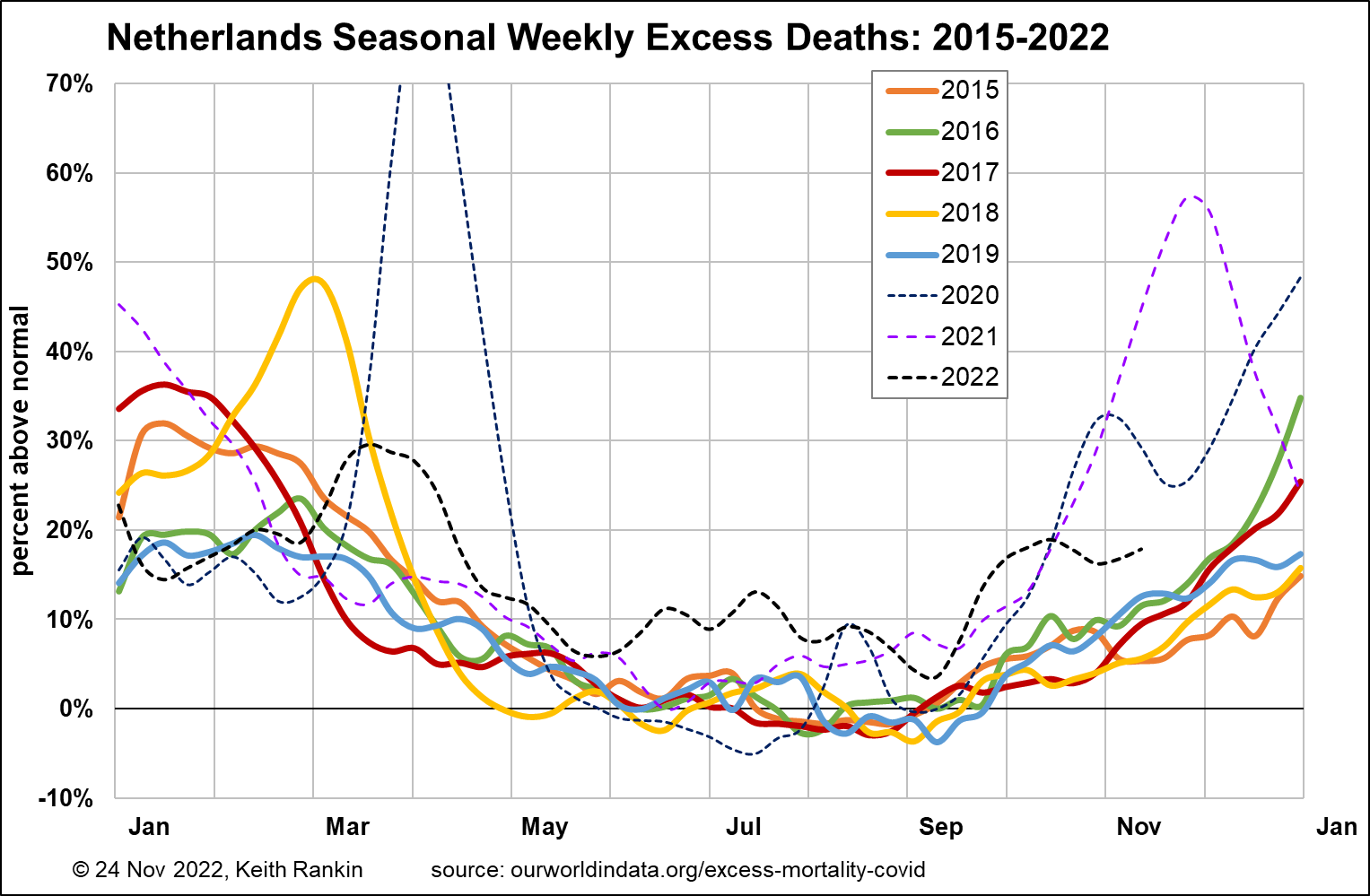
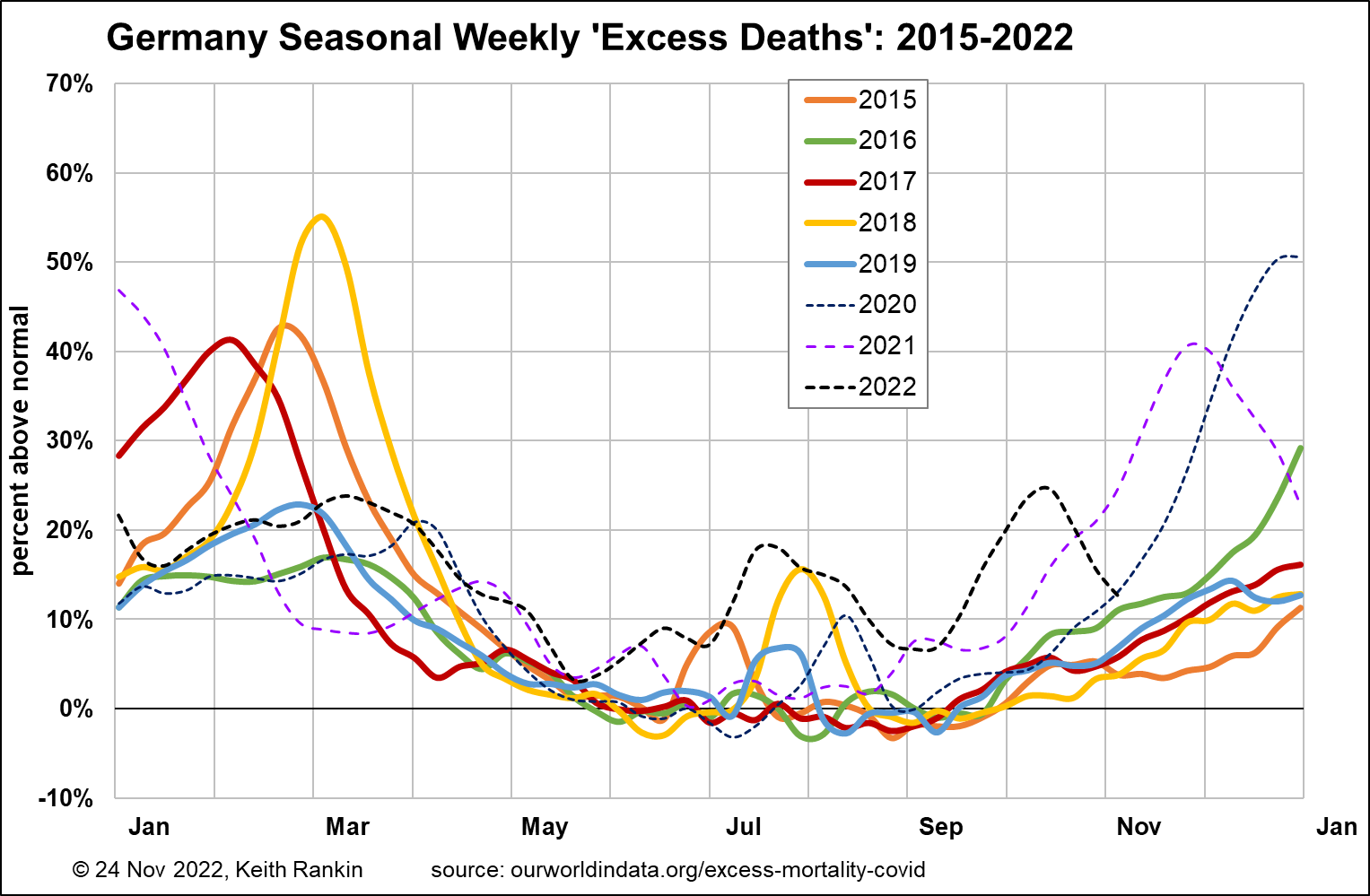
The first of the above charts shows excess seasonal deaths in the United Kingdom as winter approaches. While the huge mortality peaks of the pandemic in Britain are long past, we do see significant excess mortality in the United Kingdom since April. And October 2022 excess mortality rates are higher than those of 2020 and 2021. The situation in Netherlands is similar.
The story in Germany is similar, since June 2022. While the recent unseasonal mortality peak – due to Covid19 if reports are accurate – is now waning, it seems likely that Germany will face another mortality peak comparable with its influenza peak of 2016/17. In Germany, none of its Covid waves had as much peak excess mortality as the influenza peak of February/March 2018.
The data is not as up-to-date in the following three countries.
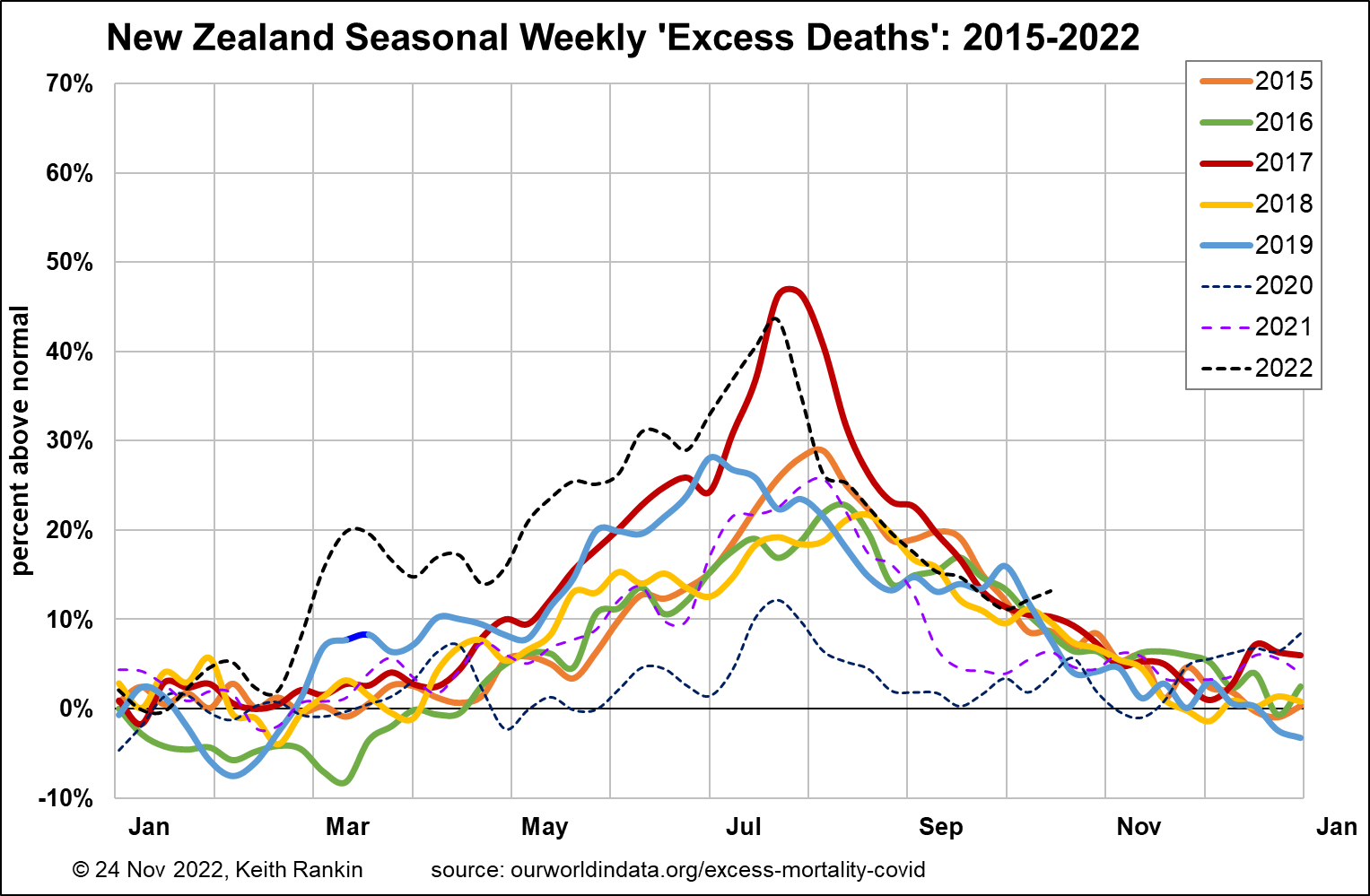
For New Zealand, we see the Covid19 deaths as a period of rising seasonal excess from February to July this year. Then there was a sharp drop-off, meaning that from August New Zealand experienced just its normal late-winter seasonal mortality. While some of this was due to Covid19, it was offset by lower-than-expected deaths from other seasonal illnesses. My hunch is that New Zealand will see a summer Covid19 mortality peak; not as high as the July peak, but unambiguously Covid19.
The other New Zealand story is the unexplained winter mortality peak of 2021. All the New Zealand public knows about this is that it was neither Covid19 nor Influenza. It might have been due in part to RSV, which hospitalised many young children in 2021. In the United States at present, we are getting reports (eg from ABC News this week) of a “tripledemic”, which includes a nasty ‘flu’ and an RSV outbreak that is hospitalising older Americans as well as children.

Finland is one country in Europe which New Zealand likes to compare itself to. Finland avoided the dramatic Covid19 peaks experienced by United Kingdom and Netherlands. But it has had worryingly high excess mortality since June 2021, and continues to do so.
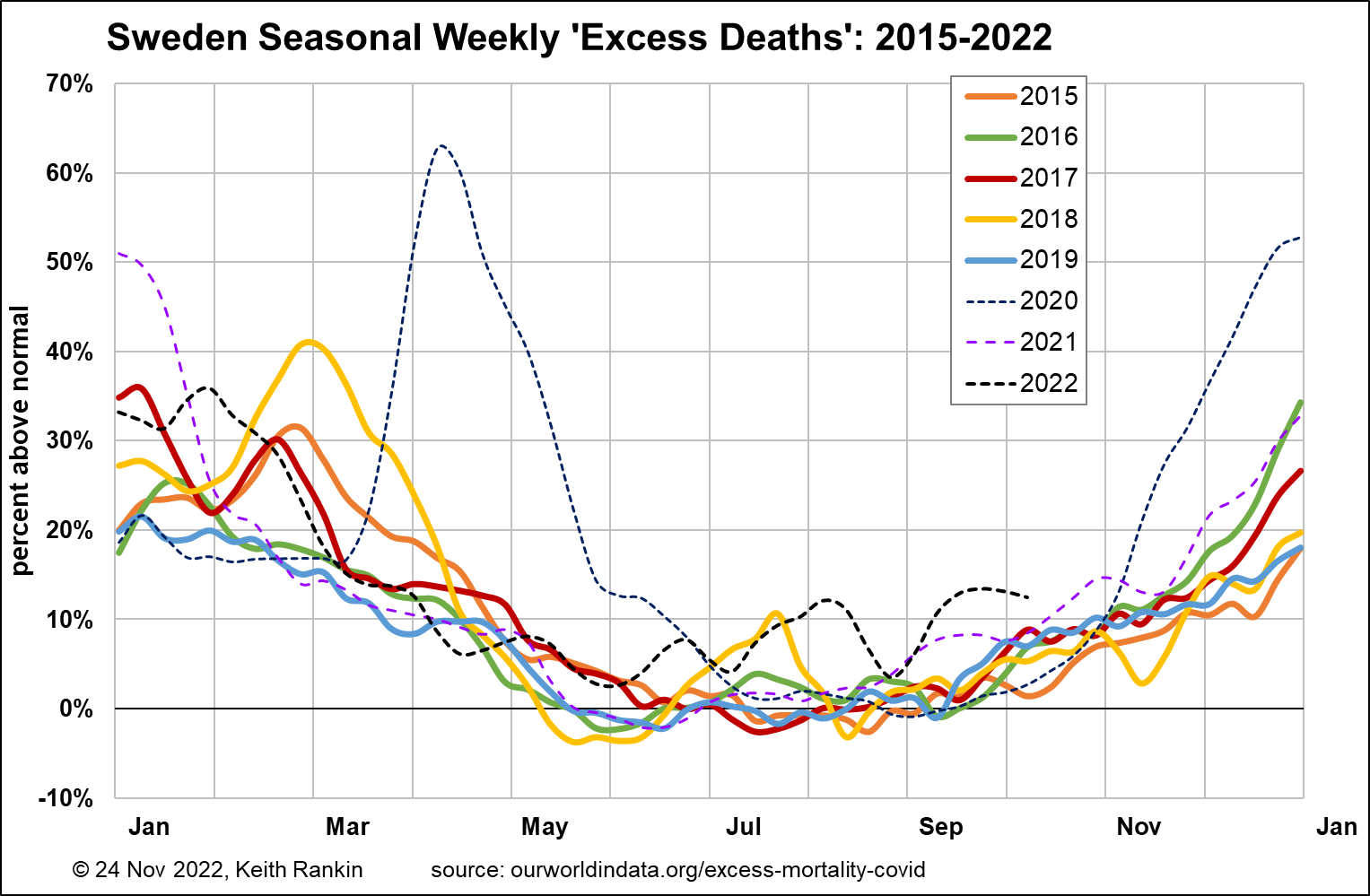
Sweden, unlike Finland, had two big peaks of Covid19 mortality in 2020. Since then, Sweden has generally looked much better than all other European countries. Nevertheless, Sweden did have a problem, presumably a Covid19 problem, from June to October 2022. Though not as bad as Finland.
Overall, the pattern seems to be that populations are becoming more vulnerable to respiratory illnesses. If people who have previously had Covid19 are dying more, then damage already done by the SARS-Cov2 virus is likely to be the main culprit. If people who did not get Covid19 previously are facing a higher risk of death from respiratory illness, then the main problem is likely to be compromised general immunity arising from reduced general community contact with these types of viruses.
The post-covid mortality problem is slightly worse than it appears, especially if we consider United Kingdom and Netherlands, both countries with high early death tolls from Covid19. In these countries, many of the people most vulnerable to Covid19 have already died. So the denominator populations are, disproportionately, covid survivors (meaning either they had it and recovered, or they avoided it). Typically, after a demographically-significant epidemic, subsequent death rates should be below the historical average.
*******
Keith Rankin (keith at rankin dot nz), trained as an economic historian, is a retired lecturer in Economics and Statistics. He lives in Auckland, New Zealand.







